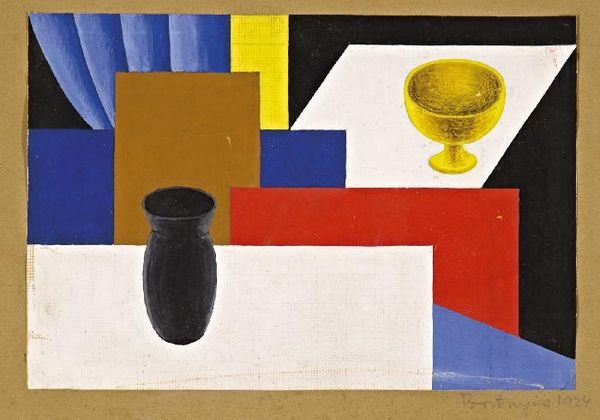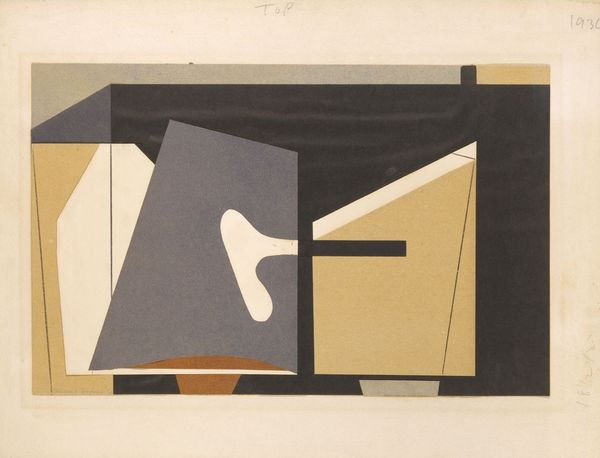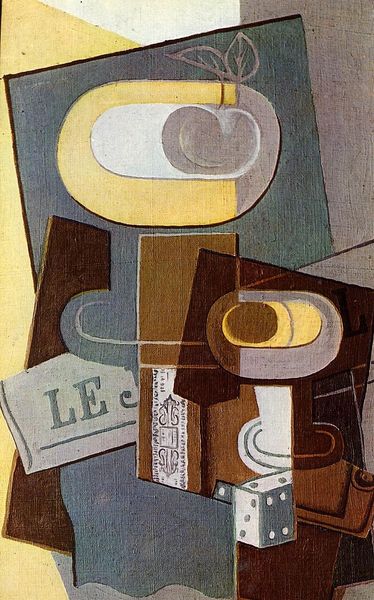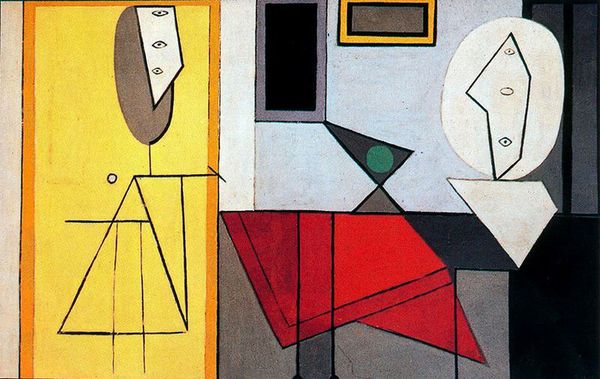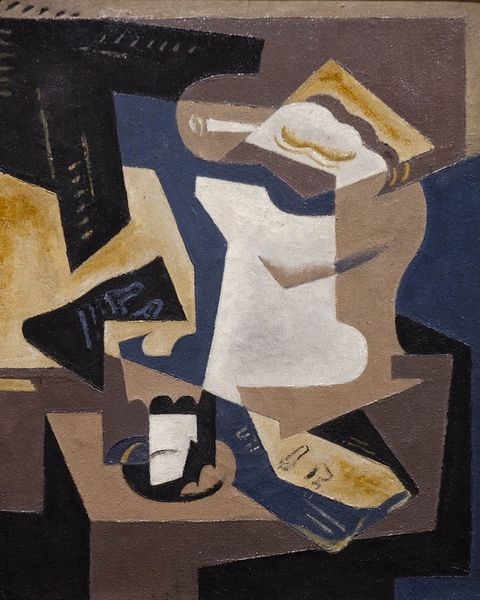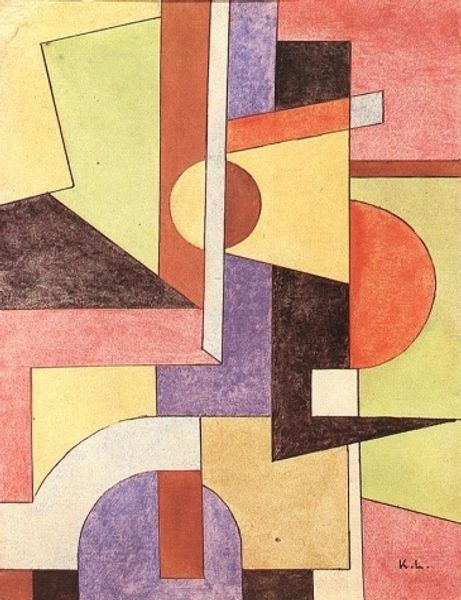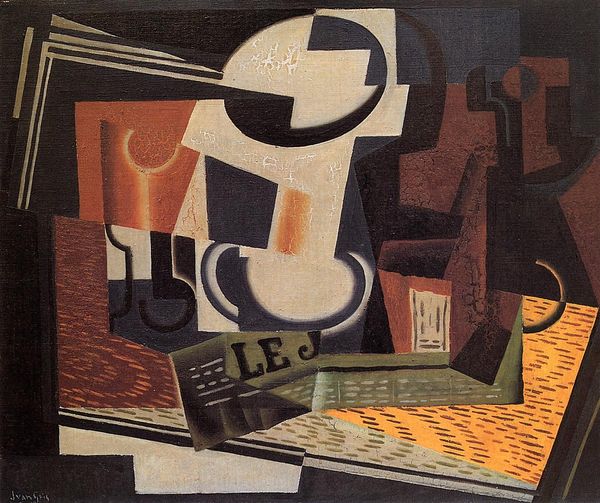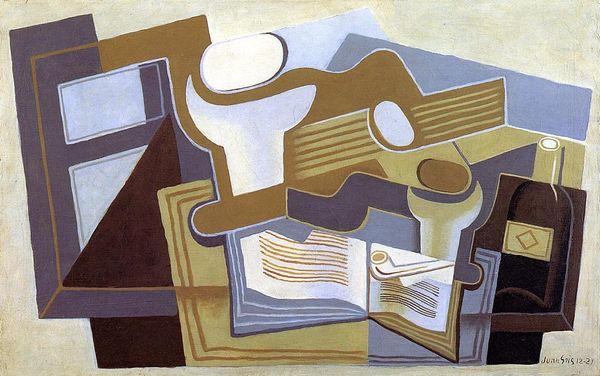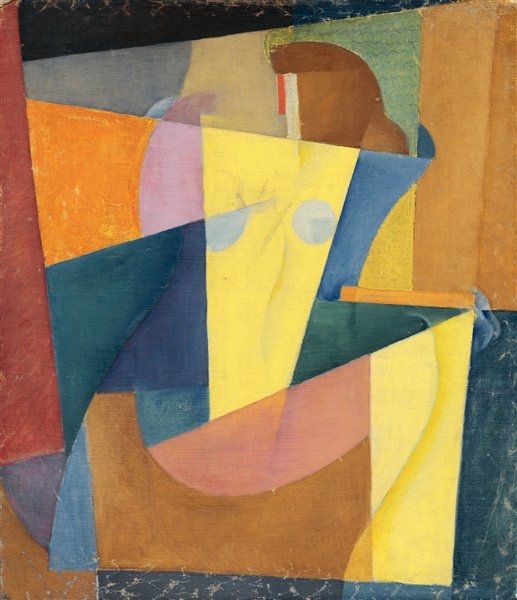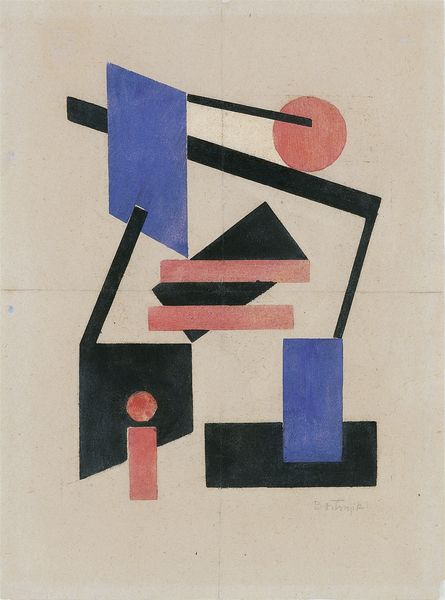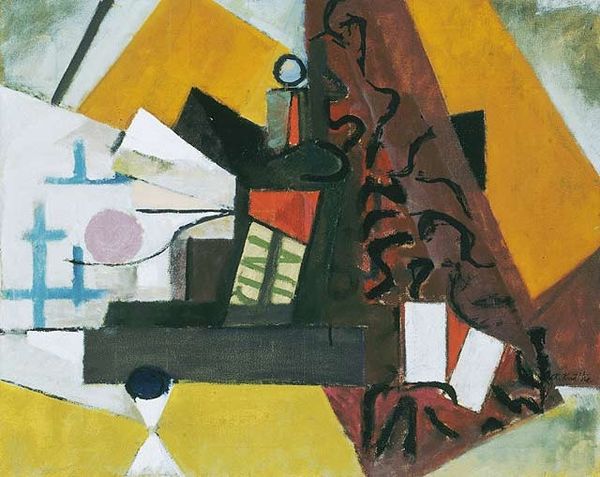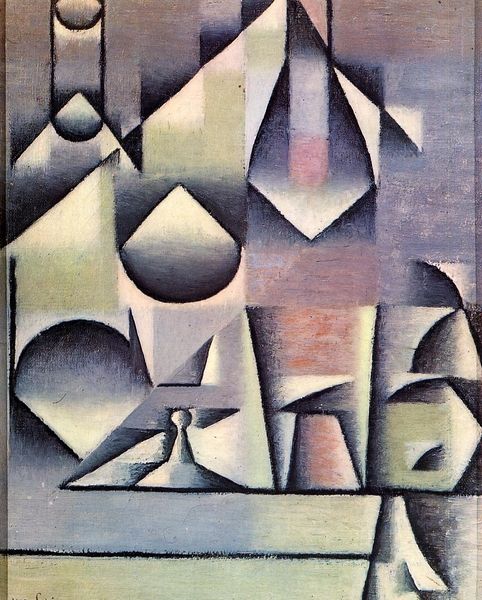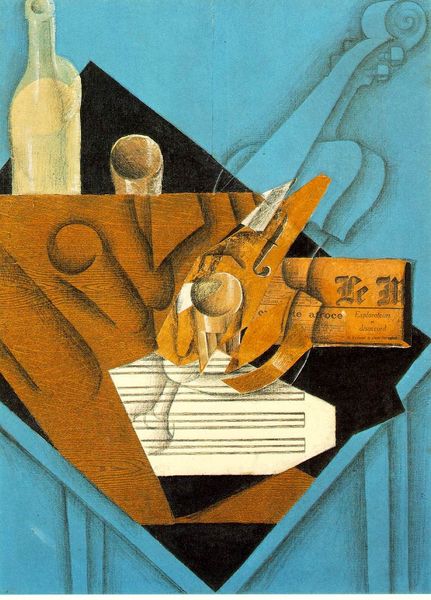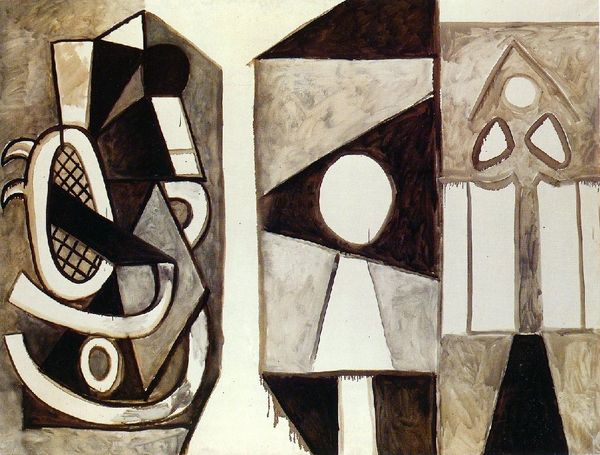
drawing, paper, ink
#
drawing
#
paper
#
ink
#
geometric
#
geometric-abstraction
#
abstraction
#
bauhaus
#
modernism
Copyright: Sandor Bortnyik,Fair Use
Curator: My first thought looking at it: it feels…stark. Very geometric and somewhat unsettling. Editor: And what you’re taking in is actually a drawing called Térformációk by Sándor Bortnyik. It is rendered in ink on paper, exhibiting strong ties to the Bauhaus movement in its commitment to abstraction. Curator: Yes, that Bauhaus connection is palpable. You see it in the way Bortnyik reduces objects to their essential forms. That cylinder, the sphere, the rectangle…it's almost a visual alphabet. Editor: Indeed. Take that cylinder you mentioned—it almost reads like a classical column, wouldn't you agree? A visual anchor to tradition amidst all the modernist striving for the new. The placement of these archetypal elements suggests a constructed space that can only exist on the page. The symbolism here feels deliberately deconstructed and reassembled. Curator: That's fascinating! And it also speaks to the larger political context, the utopian visions embedded within the Bauhaus movement itself. After all, these aren’t just formal exercises; they're experiments in building a new visual language for a new social order. Editor: It's certainly a potent image. That one diagonal line slicing across the composition is very disruptive in terms of compositional balance, it destabilizes the potentially harmonic geometry and maybe reveals the potential disruption lying within progress? It certainly introduces dynamism to an otherwise static arrangement. The vase-like structure in the image has strong, classical connotations; even this seemingly quotidian element bears historical memory. Curator: You are right, its visual punchiness has staying power! What I am particularly fascinated by is Bortnyik's strategic use of light and shadow within those stark geometric forms. It makes one consider the political power of stark visual representation, doesn't it? Editor: I think so, the blending of shadow with such rudimentary geometric forms can communicate complexity. A powerful way of layering multiple elements to communicate with symbolism. Thanks for taking the time to delve into the imagery. Curator: Thanks to you for revealing its socio-historical weight.
Comments
No comments
Be the first to comment and join the conversation on the ultimate creative platform.
